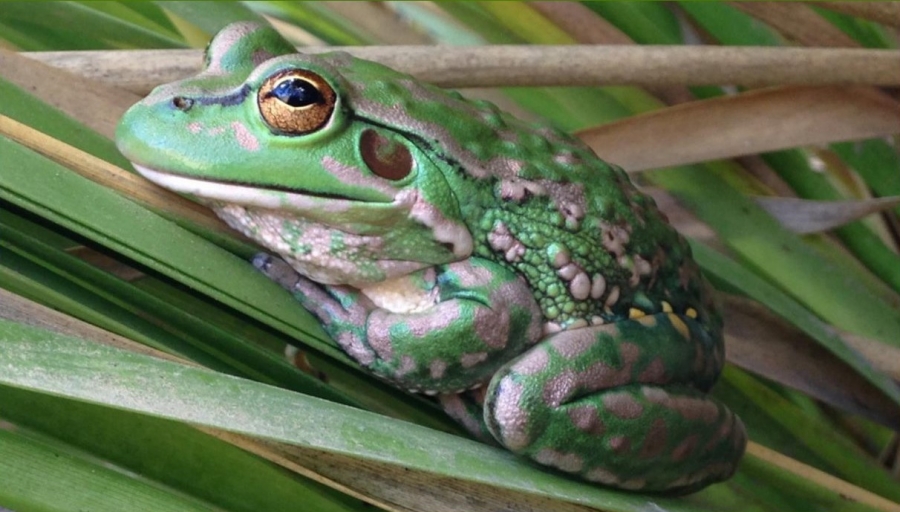At Gunning District Landcare’s AGM on Wednesday 14th November, we heard a fascinating presentation from Taronga Zoo’s Michael McFadden about his team’s work to bring the local Yellow-spotted Bell Frog back from the brink of extinction. Michael explained how the Yellow-spotted Bell Frog was once found across a large area of NSW, but from around 1980 the species was assumed to be extinct – largely due to the devastating impact of the chytrid fungus. But then in 2009, an individual frog was spotted on Blakney Creek (north west of Gunning and Dalton) by Luke Pearce of NSW DPI Fisheries who was out surveying for Southern Pygmy Perch. Luke reported his find to frog guru Dr David Hunter, and the pair returned to the area to confirm that the species was living there. This was an extremely exciting find, and there was no question that the amphibian team at Taronga Zoo would attempt to establish an ‘insurance colony’ from a small number of tadpoles and juveniles collected from Blakney Creek. It took seven years of trial and error before the team was able to create just the right conditions for the frogs to breed at the zoo (it turns out they are very fussy!). In early 2017, there was finally hundreds of new frogs, many of which were released back into their natural environment. The breeding program for Yellow-spotted Bell Frogs at Taronga Zoo is on-going. There are more planned frog releases around Blakney Creek and elsewhere, as well as active monitoring to see how well the released frogs survive in the wild.
If you think you have heard or seen this frog near you, we would be very happy to put you in touch with the friendly frog experts (they would love to hear from you!) – but it will be best if you can get a photo (the Yellow-spotted Bell Frog is one of the few green-coloured frogs you are likely to see in daylight), or get a recording of their call. If you have a smart phone we highly recommend the FrogID app developed by the Australian Museum.
